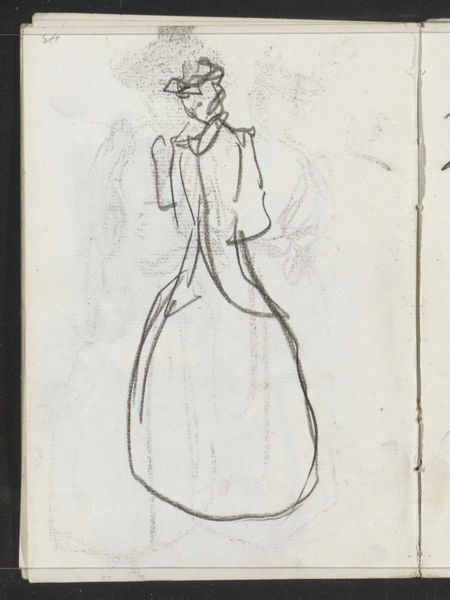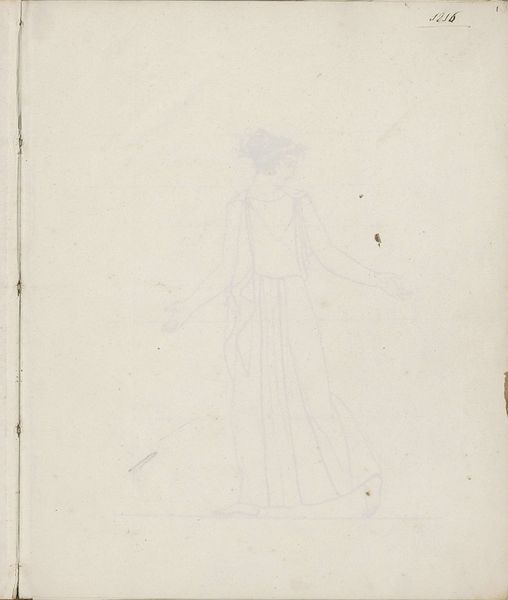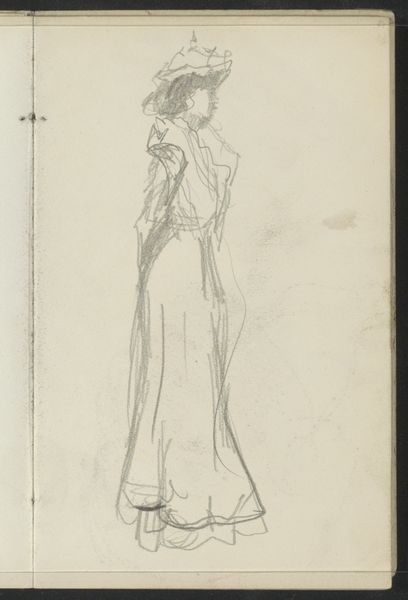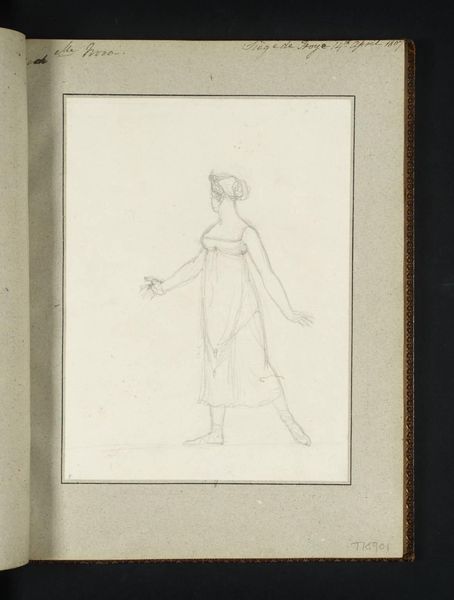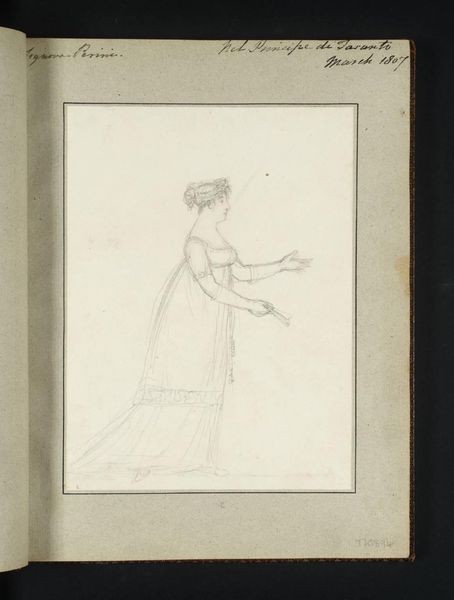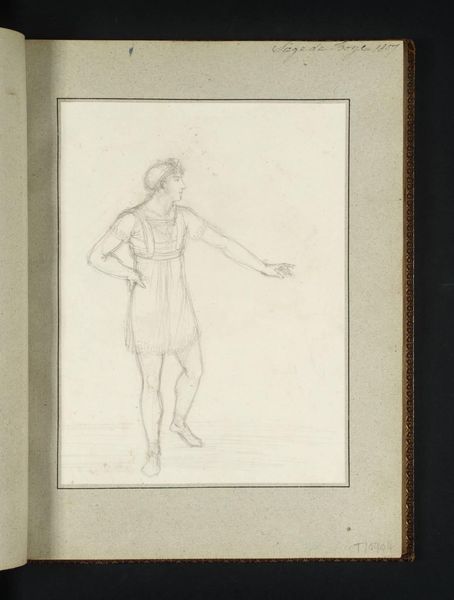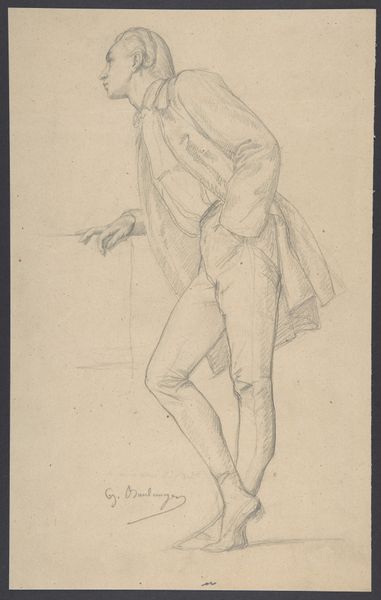
drawing, pencil
#
portrait
#
drawing
#
imaginative character sketch
#
light pencil work
#
quirky sketch
#
figuration
#
personal sketchbook
#
idea generation sketch
#
sketchwork
#
classicism
#
romanticism
#
pencil
#
line
#
sketchbook drawing
#
storyboard and sketchbook work
#
academic-art
#
fashion sketch
#
sketchbook art
Copyright: Rijks Museum: Open Domain
This is a sketch of a woman in a tunic, after a classical example, by jonkvrouw Elisabeth Kemper, made sometime in the first half of the 19th century. Kemper was a woman of noble birth, which afforded her the leisure and education to pursue artistic interests. Her social position gave her access to classical and historical subject matter. This drawing reflects the Neoclassical movement which looked back to ancient Greece and Rome for inspiration. The figure's idealized form, flowing drapery, and serene expression align with Neoclassical aesthetics. But look closely – what does it mean for a woman artist to represent the female form in this era? Is she upholding or challenging the male gaze that often dominated such representations? The drawing gives us insight into the cultural values and artistic practices of the time. It invites us to consider the role of women in art, both as creators and subjects, and to reflect on the complex interplay between gender, class, and artistic expression.
Comments
No comments
Be the first to comment and join the conversation on the ultimate creative platform.
